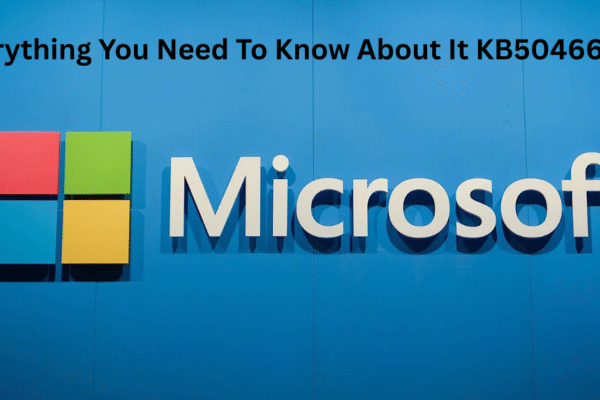

eMediCodiary vs Traditional Medical Diaries: A Complete Guide
In an era where technology is revolutionizing healthcare, the way patients and professionals manage health records has significantly evolved. While traditional medical diaries have been a staple for decades, modern solutions like eMediCodiary are reshaping the landscape of medical journaling.
This complete guide explores how the digital medical diary compares with its paper-based counterpart and helps you decide which tool best suits your healthcare needs.
Understanding eMediCodiary
eMediCodiary is an advanced patient record app that offers a centralized platform for tracking medical data. Designed to support patients, healthcare providers, and medical students, this e-health diary lets users input symptoms, medications, and appointments from their devices—turning complex health logs into easily digestible data.
What sets it apart is its health tracking tool capabilities. Users can visualize patterns, share reports instantly with doctors, and receive alerts for critical updates. It’s not just a diary—it’s a digital health companion.
What Is a Traditional Medical Diary?
A traditional medical diary is a handwritten log that patients maintain to record their daily health status. Typically used to note symptoms, medication schedules, and other health events, these diaries are straightforward and require no tech knowledge.
Despite being less sophisticated, traditional medical diaries offer a tactile, familiar feel, especially favored by the elderly or those who prefer pen-and-paper organization. Their simplicity is both their charm and their limitation.
Key Features Compared: eMediCodiary vs Traditional Diaries
Below is a side-by-side comparison of these two medical tracking methods:
FeatureeMediCodiary (Digital Medical Diary)Traditional Medical DiaryAccessibilityMobile/computer access anywhereOnly accessible where the diary is keptStorage & BackupCloud-based, secure backupsSusceptible to physical damage or lossData SharingInstant sharing via email or appPhysical transfer or scanning requiredSearch FunctionSearch by keyword or dateManual flipping through pagesReminders & NotificationsCustom alerts for medications & appointmentsMust rely on memory or external remindersAnalytics & VisualizationGraphs, trends, and insights for better trackingLimited to user’s written interpretation
Benefits of Using eMediCodiary
Smart Tracking with a Health Tracking Tool
Unlike paper-based solutions, eMediCodiary provides a full-fledged health tracking tool experience. It tracks everything from temperature and blood pressure to emotional health.
Cloud-Based Convenience
Medical data saved through eMediCodiary is stored securely and can be accessed across multiple devices. No more worrying about lost notebooks or smudged ink.
Easy Data Sharing
With just a few taps, users can send their records to healthcare professionals. This simplifies diagnosis and ongoing care planning.
Perfect for Medical Students and Doctors
Beyond patient use, this patient record app is a reliable tool for students in training and practicing clinicians. It assists with managing case histories and reviewing patient progress in a structured way.
Advantages of Traditional Medical Diaries
No Tech Skills Required
Paper diaries are accessible to anyone. They require no app installation or digital literacy, making them ideal for older users.
Tangible Writing Experience
Some individuals find comfort in handwriting their thoughts and feelings. It creates a deeper connection between the mind and body, especially when journaling health symptoms or progress.
Cost-Effective
Without the need for subscriptions or devices, traditional medical diaries are a budget-friendly solution for basic health logging.
Limitations of eMediCodiary
- Requires a Device: Users need a smartphone or computer.
- Internet Access: Though some features may work offline, full access requires connectivity.
- Learning Curve: Not ideal for users unfamiliar with digital interfaces.
Limitations of Traditional Medical Diaries
- Prone to Loss or Damage: Unlike an e-health diary, paper records can be misplaced or destroyed easily.
- No Data Backup: Once lost, the data is irretrievable.
- Manual Organization: Searching for past entries or analyzing health trends is difficult.
Security and Privacy: A Critical Factor
With growing concerns over health data protection, the digital medical diary must prioritize security. eMediCodiary ensures encrypted data storage and user-controlled access. This gives users peace of mind knowing their information is safe.
In contrast, a traditional medical diary offers privacy only as long as it’s stored securely. There’s no encryption—anyone who accesses the notebook can read its content.
User Experience: What Do Patients Prefer?
User preference often depends on age, tech experience, and specific health needs.
- Tech-Savvy Users: Prefer eMediCodiary for its functionality, design, and convenience.
- Elderly Patients: May stick to traditional medical diaries due to familiarity and ease.
- Chronic Condition Management: Strongly benefits from the analytics of a health tracking tool like eMediCodiary.
When to Choose eMediCodiary
Consider using eMediCodiary if:
- You want easy, organized access to health data.
- You need to frequently share updates with a healthcare provider.
- You’re looking to track long-term trends and insights.
- You’re a student or doctor needing a structured patient record app.
When to Stick With a Traditional Medical Diary
You might prefer a traditional medical diary if:
- You’re not comfortable with technology.
- You only need to log basic daily symptoms.
- You want a no-cost solution that doesn’t depend on connectivity.
Expert Insights: A Hybrid Future?
Many healthcare professionals suggest a blended approach. While eMediCodiary is unmatched in analytics and convenience, traditional medical diaries still offer value in certain situations. For example, users might jot down notes by hand during the day and later transfer them to the digital medical diary for permanent logging.
This hybrid method helps bridge the gap between accessibility and innovation, especially for users transitioning from analog to digital.
Conclusion
The choice between eMediCodiary and a traditional medical diary depends on the user’s needs, habits, and tech comfort level. While both serve the same essential purpose—medical journaling—the digital option opens doors to better analysis, sharing, and long-term tracking.
In today’s world of interconnected healthcare, eMediCodiary presents a strong case as the future of patient record apps. But for those who value the simplicity and tangibility of pen and paper, traditional medical diaries still hold relevance.
So, what’s best for you? If you’re looking for accuracy, accessibility, and smart features, give eMediCodiary a try. If you just need a simple way to track your symptoms, the classic diary may be enough.
Whatever your choice, consistency is key. A well-kept health journal—digital or traditional—can be a powerful ally in your wellness journey. Check out our site for the latest content!













